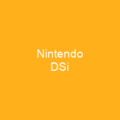Nintendo Co., Ltd.: The Journey from Playing Cards to Gaming Giants
Imagine a company that started with simple playing cards and grew into the world’s most recognizable gaming brand. That’s Nintendo, a journey filled with innovation, strategic brilliance, and cultural impact.
The Early Days: From Hanafuda to Home Consoles
Nintendo Co., Ltd. was founded in 1889 by Fusajiro Yamauchi as Nintendo Koppai, a small company producing hanafuda playing cards. Over the years, Nintendo diversified its offerings and ventured into new markets. In 1977, they released their first console, the Color TV-Game, marking the beginning of their foray into home entertainment.
From Donkey Kong to the NES
Can you imagine a world without Mario or Zelda? These iconic characters were born in the 1980s when Nintendo released Donkey Kong and the Nintendo Entertainment System (NES).
The Rise of Home Consoles
The NES was a game-changer, not just for Nintendo but for the entire gaming industry. It introduced new technologies like the controller with buttons and became an instant hit in North America. The success of the NES laid the foundation for future consoles like the Game Boy, Super Nintendo Entertainment System (SNES), and beyond.
Strategic Innovations: From Beam Gun to Virtual Boy
How many times have you played a game that changed your perspective on gaming? The Beam Gun, released in 1964, was one of the first electronic toys and set the stage for future innovations.
The Virtual Boy: A Mixed Reception
In 1995, Nintendo released the Virtual Boy, a headset that promised stereoscopic 3D gaming. While it didn’t meet expectations due to its design and gameplay issues, it did introduce the popular Pokémon franchise through the release of Pocket Monsters Red and Green.
The Modern Era: From DS to Switch
How many times have you picked up a Nintendo console or handheld device? For millions around the world, it’s not just a game—it’s an experience.
The Game Boy and Beyond
The Game Boy, released in 1989, became a massive success with over 150 million units sold. The Nintendo DS followed suit, selling over 154 million units by 2017. The Wii, launched in 2006, was a groundbreaking console that introduced motion controls and became the best-selling console of its generation.
The Nintendo Switch: A Hybrid Success
The Nintendo Switch, released in 2017, combined the portability of a handheld with the power of a home console. It has sold over 55 million units worldwide and continues to be a favorite among gamers.
Expansion into Animation and Beyond
Nintendo’s reach extends far beyond gaming. They’ve ventured into animation, film production, and even theme parks. The The Super Mario Bros. Movie, released in 2023, grossed over $1.3 billion worldwide.
Strategic Alliances and Future Plans
Nintendo has formed strategic alliances with companies like Sony, IBM, and even Embracer Group to ensure its continued success. They’ve also expanded their presence in markets like China through partnerships with Tencent. The future looks bright for Nintendo as they continue to innovate and expand their horizons.
Conclusion
Nintendo Co., Ltd. has come a long way from producing hanafuda cards to becoming one of the most influential companies in the gaming industry. Their journey is a testament to strategic vision, innovation, and a commitment to creating unforgettable experiences for gamers worldwide. As they continue to evolve, Nintendo remains at the forefront of the gaming landscape, shaping the future of entertainment.

You want to know more about Nintendo?
This page is based on the article Nintendo published in Wikipedia (retrieved on February 5, 2025) and was automatically summarized using artificial intelligence.






